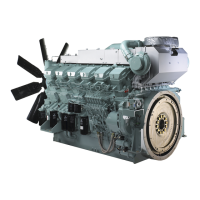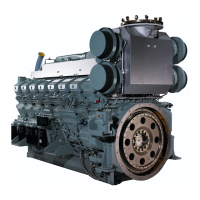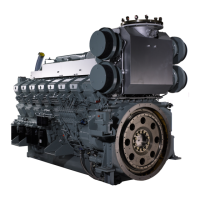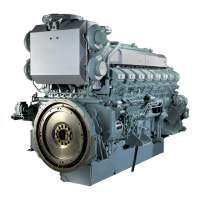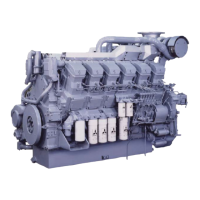3-1
Chapter 3 OPERATION
Operational Environment
Preparation for Operating New or Overhauled Engine
Before proceeding with operation of a new or overhauled engine, conduct the inspections described in this section.
For second operation onward, follow the instructions described in the "Normal Engine Operation" (3-10)
Preparation of Fuel System
1. Make sure the inside of the fuel tank and the fuel supply pipes to the engine are thoroughly clean.
2. Close the fuel tank drain valve.
3. Fill fuel tank with fuel.
4. Remove the fuel feed pipe, and check the discharged fuel for foreign materials such as dust.
5. Install the fuel supply pipe to the engine fuel inlet port.
6. After the contact of the float switch is checked, add fuel to "FULL" level.
Check that the following contents are performed before the engine is operated. Failure to do so may cause various
problems and will shorten the service life of the engine.
Prevent from spreading water (especially, seawater or rainwater) and entering foreign materials to the air inlet
opening.
Prevent from entering foreign materials to the rotating parts.
Prevent from attaching water and dust to the electrical system.
Use the engine at 5 to 40 °C [41 to 104 °F].
Keep the coolant temperature properly by switching ON the water heater (automatic mode). (Emergency generator
with water heater)
When handling fuel, make sure there are no open flames or other fire hazards near the engine.
Wipe off any spilled fuel completely. Spilled fuel can ignite and cause a fire.
Do not remove the strainer during fuel tank filling.
For fuel to be used, refer to "FUEL" (4-1)
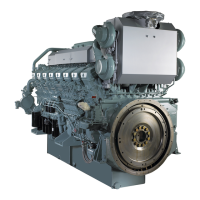
